ECON 491 Lecture 14: Shrinkage/Regularization
1/9
There's no tags or description
Looks like no tags are added yet.
Name | Mastery | Learn | Test | Matching | Spaced |
|---|
No study sessions yet.
10 Terms
Shrinkage Methods (also known as Regularization)
Use all p predictors to fit a model. However, the estimated coefficients are shrunken (or constrained or regularized) towards zero relative the least squares estimates.
**With some shrinkage methods, some of the coefficients may be estimated to be exactly zero; shrinkage methods can perform variable selection
Two popular shrinkage techniques:
→ Ridge Regression
→ Lasso Regression
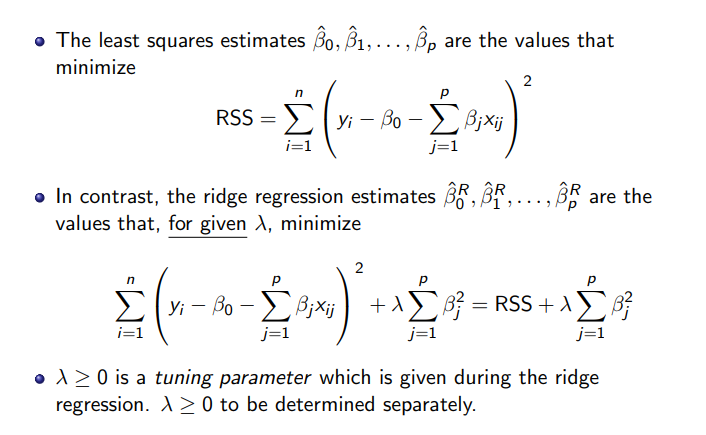
Ridge Regression
→ Ridge regression minimizes both RSS and the term λ (Sigma) p^j=1 β2 j (*This term is called shrinkage penalty)

What is the shrinkage penalty?
It gets small when β1, . . . , βp are close to zero—it forces estimates closer to zero.
→ The tuning parameter λ ≥ 0 controls the relative impact of the RSS and the shrinkage penalty.
→ When λ = 0, the penalty has no effect, the ridge regression will produce the least squares estimates.
→ When λ → ∞, the penalty grows and the ridge regression will produce estimates closer to zero.
—CV is used to select a good value for λ.
***Note: The shrinkage penalty does not apply to intercept β0; it applies only to β1, . . . , βp.
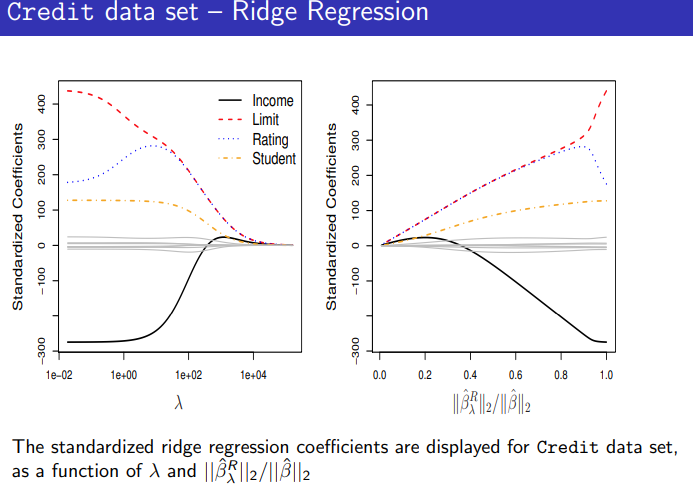
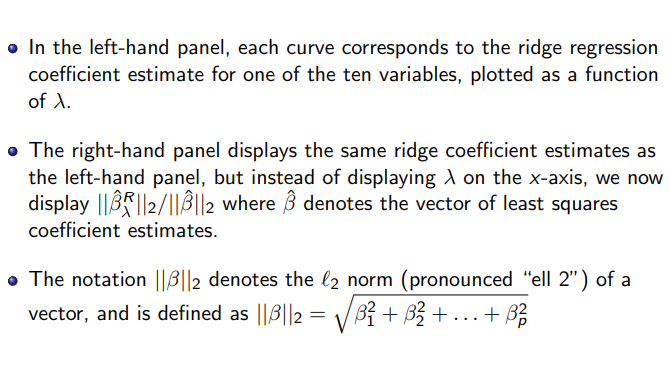
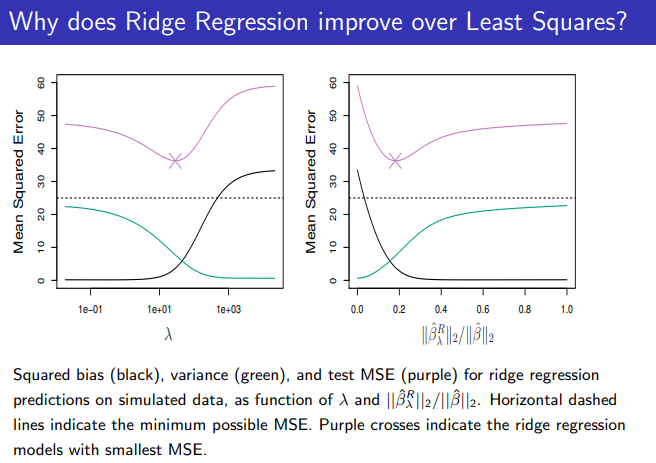
(ONE SIDED)
The LASSO (Least Absolute Shrinkage and Selection Operator)
→ Ridge regression will include all p predictors in the final model which is a disadvantage for interpretation. The Lasso overcomes this problem
→As with ridge regression, the lasso shrinks the coefficient estimates towards zero; —However in the case of the Lasso, the L1 penalty has the effect of forcing some of the coefficient estimates to be exactly equal to zero when the tuning parameter λ is sufficiently large.
→ Much like best subset selection, the lasso performs variable selection
→ As in ridge regression, selecting a good value of λ for the lasso is critical; CV again is the method of choice.
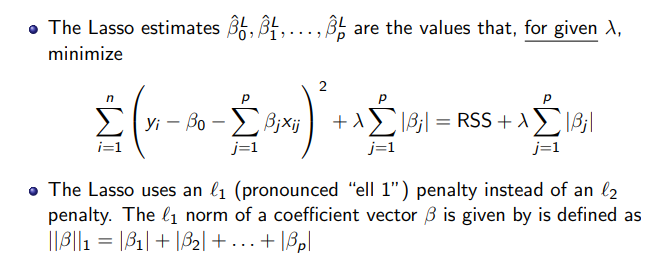
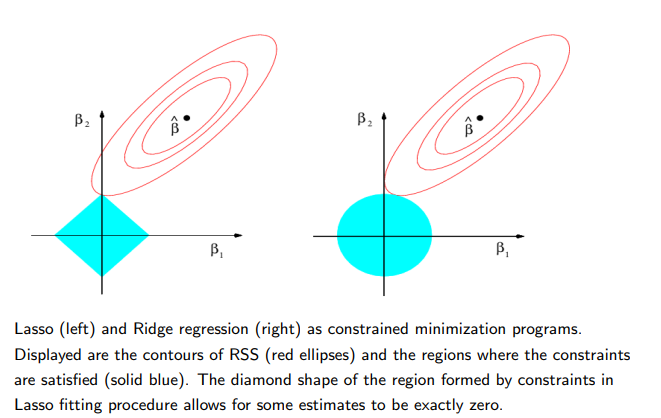
Comparing the Lasso and the Ridge regression (ONE SIDED)
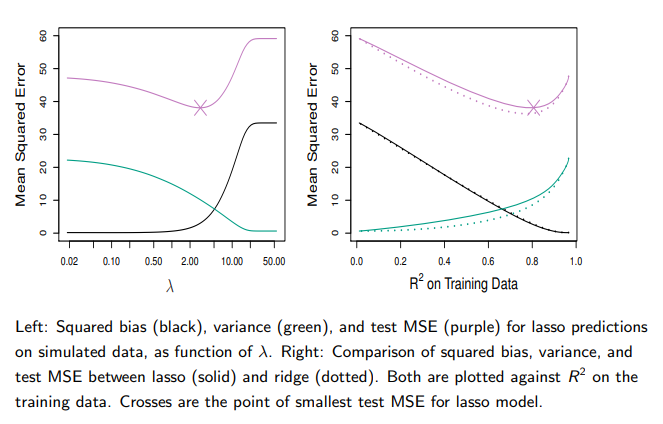
Comparing the Lasso and the Ridge Regression C’td
→ These two examples illustrate that neither ridge nor lasso will universally dominate the other
→ In general, one might expect the lasso to perform better when the response is a function of only a relatively small number of predictors
→ However, the number of predictors that is related to the response is never known a priori for real data sets
→ A technique such as cross-validation can be used in order to determine which approach is better on a particular data set
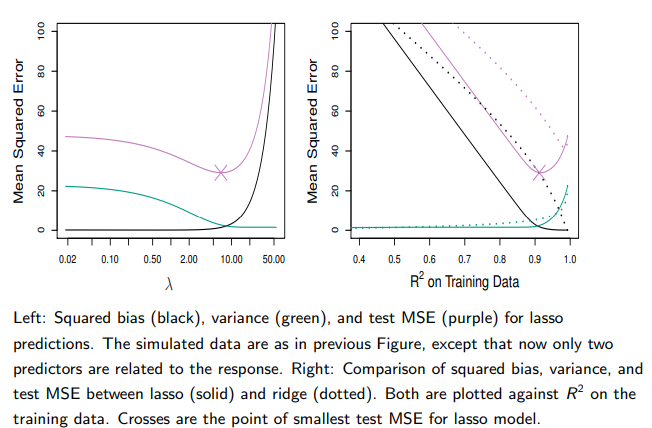
Selecting the Tuning Parameter λ for Ridge Regression and Lasso
→ CV is used
→ We choose a grid of λ values, and compute the CV error rate for each value of λ.
→ Then select the tuning parameter value for which the CV error is smallest
→ Finally, the model is re-fit using all of the available observations and the selected value of the tuning parameter.